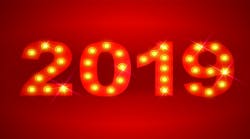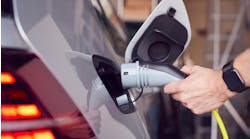Ahhh…the new year! The start of 2019 offers the opportunity to better ourselves both personally and professionally, and although you may have already thought about which resolutions you’d like to tackle this year, there’s one you likely haven’t considered: recommitting to life safety during the specification process.
When it comes to building design, life safety is arguably the most important element. After all, we’re talking about the security and welfare of our most valued assets: the people who inhabit our spaces. However, in the lighting specification process, life safety products are often an afterthought – necessary, but not necessarily our main concern. This year, resolve to keep life safety top of mind by understanding the new Title 20 and CEC regulations’ implications on life safety luminaires.
1. Which life safety luminaires are subject to the new Title 20 (T20) regulations?
Included in the list of regulated “Small Battery Charger” products are the battery backup devices in emergency lighting luminaires, emergency ballasts and drivers, and AC inverters which contain battery charging systems. Exit signs were covered under previous regulation (for instance, all Acuity Brands UL924 exit signs are now certified and listed in the CEC appliance efficiency database). Combination Exit and Emergency Lighting products are also included in the scope of the CEC Title 20 regulations.
2. When did the Small Battery Charger regulation go into effect, and how do I know if a particular luminaire is compliant?
The regulations for commercial Small Battery Chargers took effect on January 1, 2017, and apply to products manufactured on or after that date. This means that a manufacturer that built a product prior to that date could still offer that product for sale after the regulation effective date and until that stock is depleted. Products manufactured on or after January 1, 2017, must meet the efficiency standard as outlined in the regulations before it is offered for sale in the state of California. Compliance with Title 20 is confirmed by checking the CEC Appliance Efficiency Database: http://www.energy.ca.gov/appliances/database/
3. Does anyone maintain a list of CEC T20 products?
Manufacturers certify products that have been tested by a CEC approved lab and meet the Title 20 requirements. The certification includes a declaration that the information is accurate for each submitted product. Products meeting the certification provisions are listed in the CEC Appliance Efficiency Database: http://www.energy.ca.gov/appliances/database/
Interested in content created for engineers by engineers? Subscribe to the e2e newsletter today!
Sponsored by:




